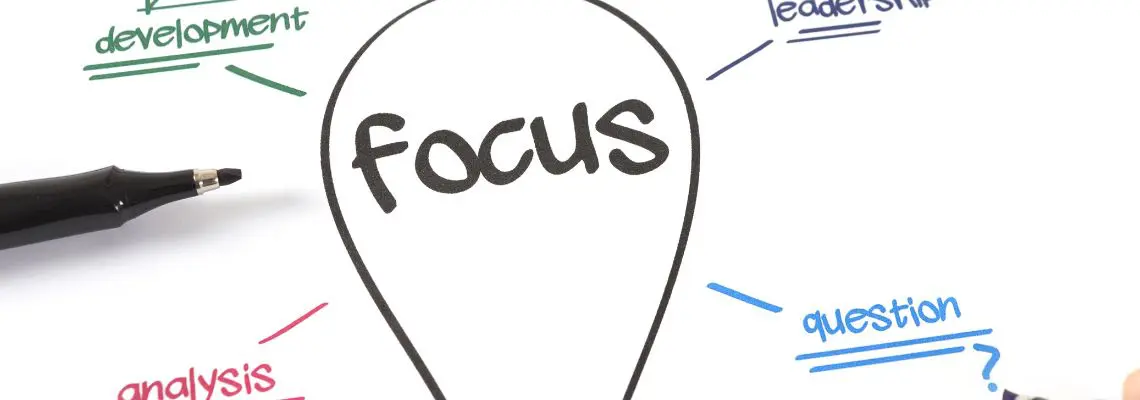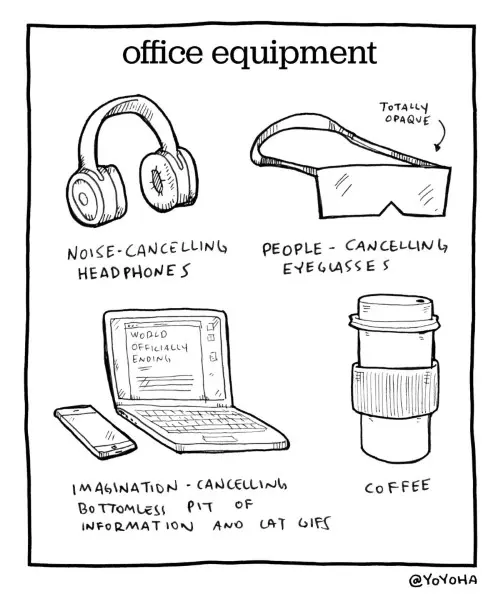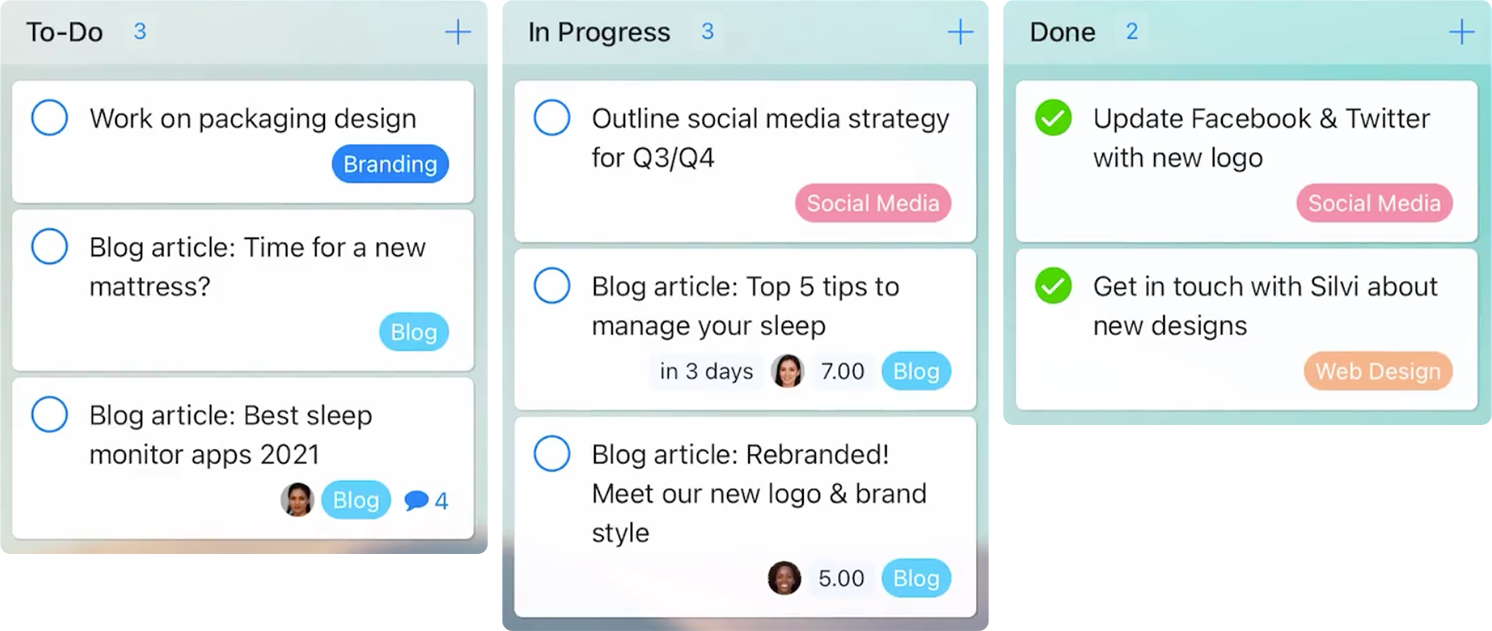Focus: The Key to Unlocking Your Productivity
How to find your focus, and keep it

In my recent article on time blocking, I talked about how time blocking works, a few ways to make it happen for you, and a few of the benefits. However, there’s no point blocking out three hours of the day to work on something if you’re unable to use it well! Today, I want to focus on… well… focus!

Time Blocking, a Recap
Particularly when you’ve got a big, scary task in front of you, the sheer volume of work can put you off and cause you to procrastinate or succumb to distraction. However, once you actually start, it’s rarely as hard as you’d feared.
This is because once you start, and if you’ve set up the right environment, you can enter a ‘flow’ state where great work just seems to flow out of you. Time blocking can be an incredible way to facilitate flow and approach these big, scary tasks.
Especially in creative or knowledge work, it can take time for you to get into the right mindset. One hour is rarely enough to make a big difference to your work. Generally, two to three hours is the sweet spot since it gives you time to get into a groove, without exhausting or boring you.
So, the next time you feel overwhelmed by a task, try scheduling a solid 3-hour block of time to get it done. You may find yourself really making great progress toward finishing it, thus reducing stress, clearing out your head, and generally making you feel pretty accomplished and ready to face whatever comes next.
Finding Your Focus
That three hours of blocked-out time will do you no good unless you’re able to focus. And by ‘focus’ I mean not only being able to focus on your work, but also focusing on what needs to be done, i.e. prioritizing.
Decide what’s important (where you should focus), then do the important things (direct your focus).
Prioritizing can be done in many ways:
- Using an Eisenhower matrix to identify urgent vs. important tasks
- Use a GTD action list (check out the basics here)
- Eating the frog (doing the hardest thing first)
- Assessing the value of tasks and their impact on your personal/business goals
- Ordering by estimated effort
Whatever method you choose, your ability to recognize what’s irrelevant to your main goals and ignore it (to say ‘no’), is just as important as your ability to find and focus on priorities. As superhumanly productive Tim Ferriss says,
“Being perpetually busy is a kind of laziness.”

Putting It Into Practice
These lofty goals of carving out your blocks of time and getting down to an incredibly productive, well-prioritized, and focused few hours of deep work may seem unattainable, but there are several tricks you can use to make it happen.
The following tips will help you re-train your attention and set up your environment to support your best work.
Fight Back
The first, most obvious step is to avoid distraction. Distraction and loss of focus are nothing new. The Stoic philosopher, Seneca, wrote in his “Letters From A Stoic” (penned almost 2000 years ago),
“There is never a time when new distraction will not show up.”
Distractions will always be there, so the best thing you can do is to manage your attention, rather than your time. Blocking a few hours out of your calendar is the easy bit! Next, you need to set yourself up for success by doing everything you can to simply stop distractions from happening in the first place.
Alerts and notifications are designed to grab and monopolize our attention. We’re physiologically and psychologically hardwired to respond to alerts, even when those alerts are rarely actually urgent or important (new like on Instagram, anybody?). We even get addicted to them, thanks to the dopamine release that comes from responding to the signal. Companies know this and they’ve worked hard to develop the best ways to get your attention.

By succumbing to messages you’re really holding yourself captive to others’ motivations and ideas, rather than focusing on your own priorities.
Train Yourself to Focus

Now you’ve found a way to carve out a few interruption-free hours for yourself, you may not yet be able to stay in the groove the entire time. That’s totally fine. The world we live in is full of things vying for attention, and all this overstimulation and ‘multitasking’ is why many of us seem to have lost the ability to focus.
It’s important to remember that focus is a skill developed over time, and like any skill, it requires lots of practice. Especially if you’re new to this whole deep-focus thing, methods like the Pomodoro Technique® are fantastic for teaching you how to focus.
The Pomodoro Technique® forces you to work on one thing, and one thing only, for 25 minutes at a time, with 5-minute breaks in between sessions. After four 25-minute sessions of focus, you can take a longer break of 15–30 mins.
The great thing about this is that 25 minutes is totally approachable. It’s much easier for you to ignore the siren calls of your phone notifications for 25 minutes than it is for three hours. The psychological barrier to starting a short block of work is much lower than it is for a longer one.
🍅Here’s how to Pomodoro®🍅
- Write a list of everything you need to do, in bite-sized, actionable tasks. (Check out my guide to writing effective tasks for ideas on how to do this really, really well!)

Bring Pomodoro to the next level.
Get started with our easy-to-use project management software for free today!
- Set a timer for 25 minutes.
- Work on the task until the timer rings, then put a checkmark next to your task.
- Take a 5-minute break. Walk around, grab a coffee, and do some stretches. Being active helps!
- Repeat! Keep adding checkmarks to your list until you’ve got 4 down, then take a longer break. 30 minutes is good.
A general tip for your short breaks: If you can, avoid checking your email or messages or Instagram, or whatever it is. Eventually, you’ll train yourself not to need that instant gratification and you’ll be able to stop picking up your phone every 5 seconds.
Once you’ve learned to focus for these short bursts, you may find that you want to keep going, you’ve found your flow and the constant breaks are becoming a distraction in and of themselves. If so, good for you! Looks like you don’t need Pomodoro® anymore (but it’s always there for you if you’re having a hard time getting into the groove!).
Practice Mindfulness

Incorporating some kind of mindfulness practise into your daily routine, whether it be meditation, journaling, or going out for a run and simply appreciating nature, helps you find focus on your own terms, away from work and the pressure of success. Making these practices a part of your routine means you’re consistently reinforcing your ability to concentrate on a single task and filter out distractions (whether they’re concrete or emotional).
Things like meditation also help you to become more aware of yourself and your surroundings, which leads nicely on to the next tip…
Be Aware
Despite all our distraction-avoiding and newfound ability to focus, it’s inevitable that distractions will still show up. The solution? Be aware of what’s happening when you get down to work. Notice when you start to lose focus or become distracted. Acknowledge it, then redirect your focus to the task at hand.
An HBR article by Paul Hammerness and Margaret Moore outlines an easy ‘ABC’ method to help you hit the brakes on distraction: Become Aware of your options: Give in to the distraction, or keep working. Breathe deeply, and consider the options. Then Choose whether to get distracted or move forward with your task. Making this choice can help reinforce the priority you set for yourself.
Another way to approach this comes from the trusty old Pomodoro Technique®. One of the rules of the technique is that if something comes up — you remember something you need to get done, or someone pops in and asks you to do something — write it down as a task on a bit of paper nearby, then get right back to work. Writing the task down means you get it out of your head right away, and it’s not niggling away at the back of your mind while you’re trying to focus.
Final Thoughts
Phew! That’s all folks! Let me know in the comments below how your time blocking is going! Do you have some tricks up your sleeve that help you focus?
Cheers,
Siobhan and the Zenkit Team
Note: Pomodoro Technique® and Pomodoro® are registered trademarks of Francesco Cirillo.
FREE 20 MIN. CONSULTATION WITH A PROJECT MANAGEMENT EXPERT
Wanna see how to simplify your workflow with Zenkit in less than a day?
Book a Live Demo